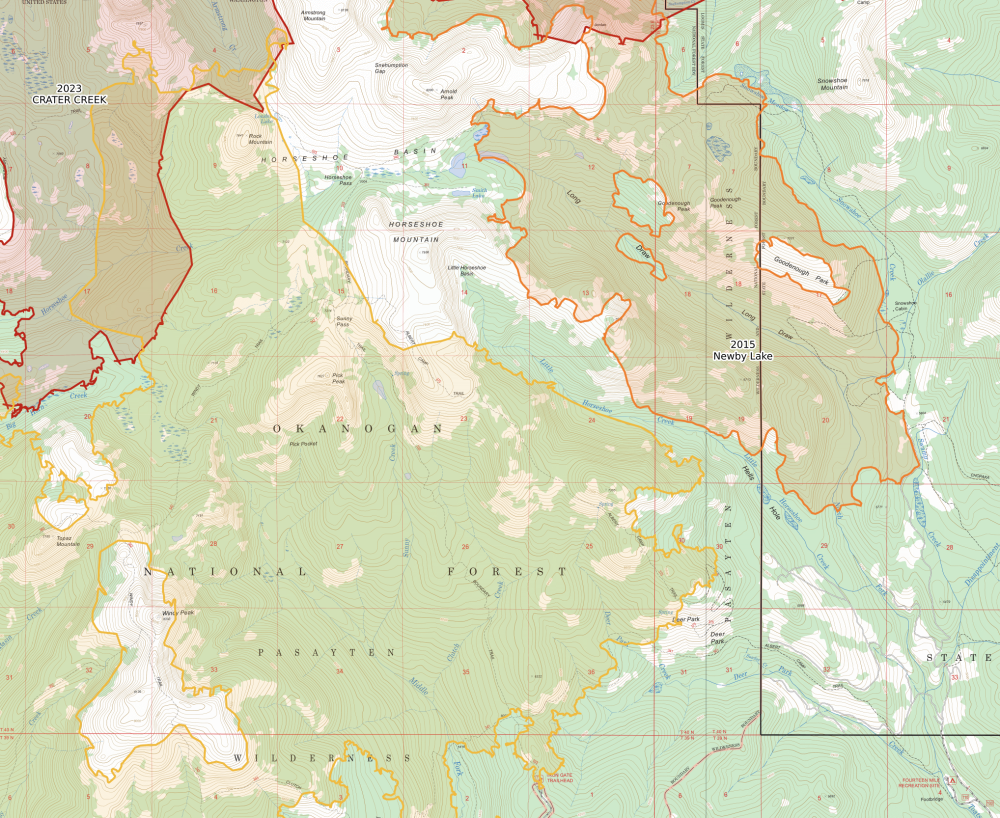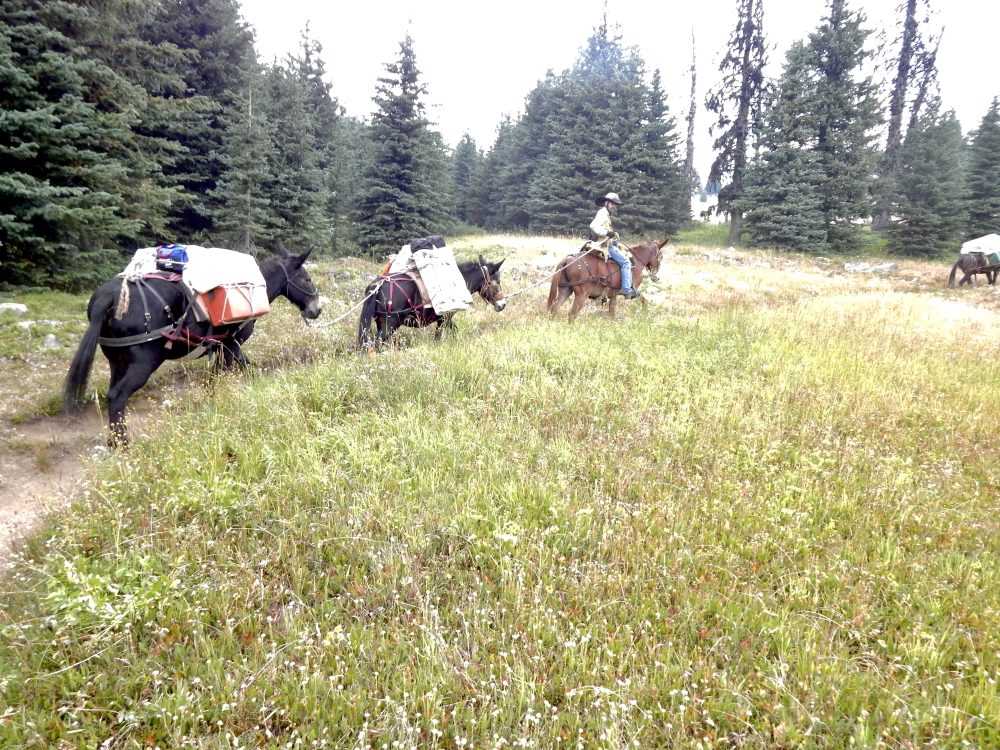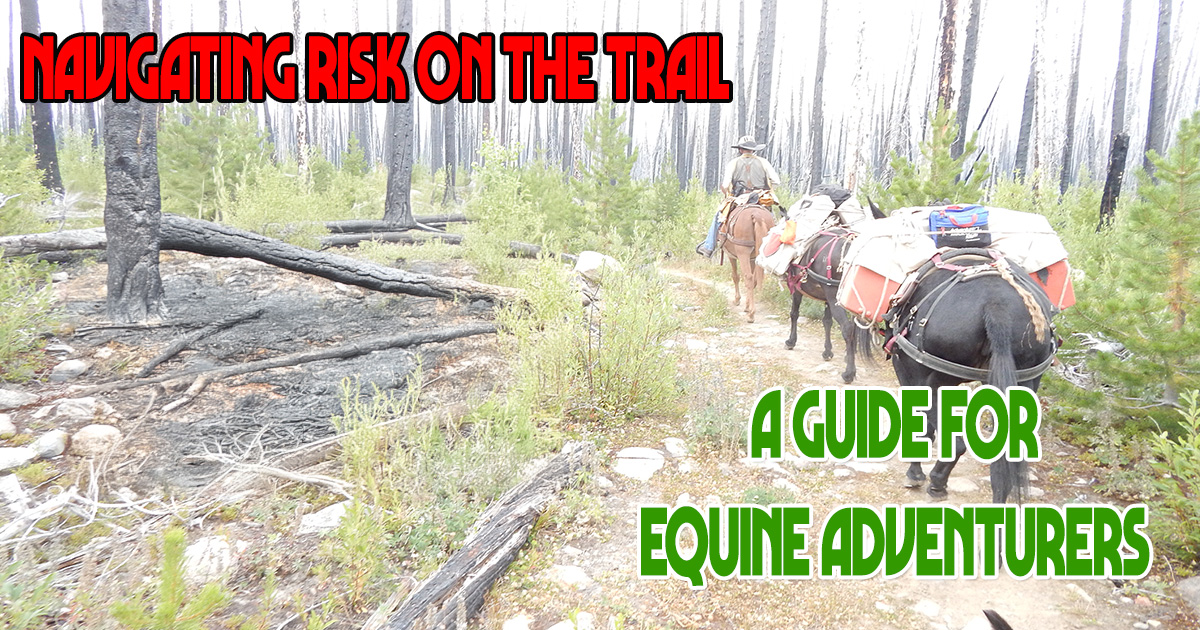Trail riding entails risks.
A few years ago, along the Canadian border in the Pasayten Wilderness, we noticed a thick smoke plume rising in the distance. Haze began to fill the basin where we camped. The plume was ominously between us and the direction of our route back to civilization.
Realizing the potential that this could become an eventful ride, I sent a message to our emergency contact at home, asking for wildfire information. Within minutes, we had a situation report on the fire and its trajectory. With that info, we quickly formulated a plan: break camp at first light and head for the trailhead to depart for home. The smoke was much thicker when we reached the trailhead the following afternoon. A quick set of messages confirmed that the road out was still open, but the wind forecast had the fire line heading across it. We needed to leave ASAP. And we did.
As we descended the mountain and returned to paved roads, the impact of the fire was evident. The mountainsides that had been lush and green just days earlier were now blackened and still smoking.
This experience underscored the importance of risk management, a crucial skill for anyone heading out on the trail with horses or mules. While we can minimize risk, we can never eliminate it. Our best approach is understanding the potential risks and preparing as thoroughly as possible.
Preparation is Key
It all starts with knowledge. Educating yourself on the basics before setting off into the backcountry is vital. This goes beyond ensuring your horses are up to the ride. Always check the weather forecast, even if heading to a familiar place. Check for updates on trail conditions, and ensure you’ve packed all necessary supplies for you and your animals—plus a little extra. Simple preparation can be the best form of risk mitigation. Before our trip, we studied maps of our destination and were aware of the wildfire risk during the summer riding season.
Communication and Coordination
While we can’t control the environment, we can influence our behavior. Discussing the day’s plans and backup options before hitting the trail ensures everyone starts from the same point. Regular check-ins along the way to discuss observations and any arising concerns are essential. Risk management in a group setting falls apart without proper and consistent communication. We spent ample time weighing our pros and cons together before heading back to the trailhead, ensuring our entire group was on the same page. No one left wanting to stay longer in the backcountry, and everyone’s concerns about the ride out were addressed.
Tools and Preparedness

When the unexpected happens—an injury, a sudden storm, or a case of food poisoning—it’s time to use the tools you’ve packed. For us, that meant communication devices, good maps, and first aid equipment. Thankfully, we didn’t need all these, but we were prepared. Satellite communicators take up little space and can significantly mitigate risks. Additionally, having a well-stocked equine first aid kit and knowing how to use it is essential. Ensure you have items like bandages, wound ointments, and electrolytes for your horse.
Accepting and Managing Risk
Risk is an inherent part of the journey, and we accept this each time we venture out with our equine companions. With some foresight and preparation, most adventures will be smooth. But if storm clouds do roll in, having the right tools and the knowledge to use them is crucial for proper risk management.

By sharing our experience in the Pasayten Wilderness, I want to highlight the importance of preparation and communication. Risks come and go, but you and your equine companions can navigate them safely with the right approach. And remember, opting out is always an option if the situation becomes too dangerous. The trails will always be there.
Visit us at www.TrailMeister.com for more information about trail riding, camping with livestock, and the world’s largest guide to equine-friendly trails and horse camps.


